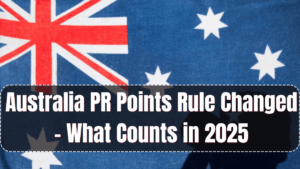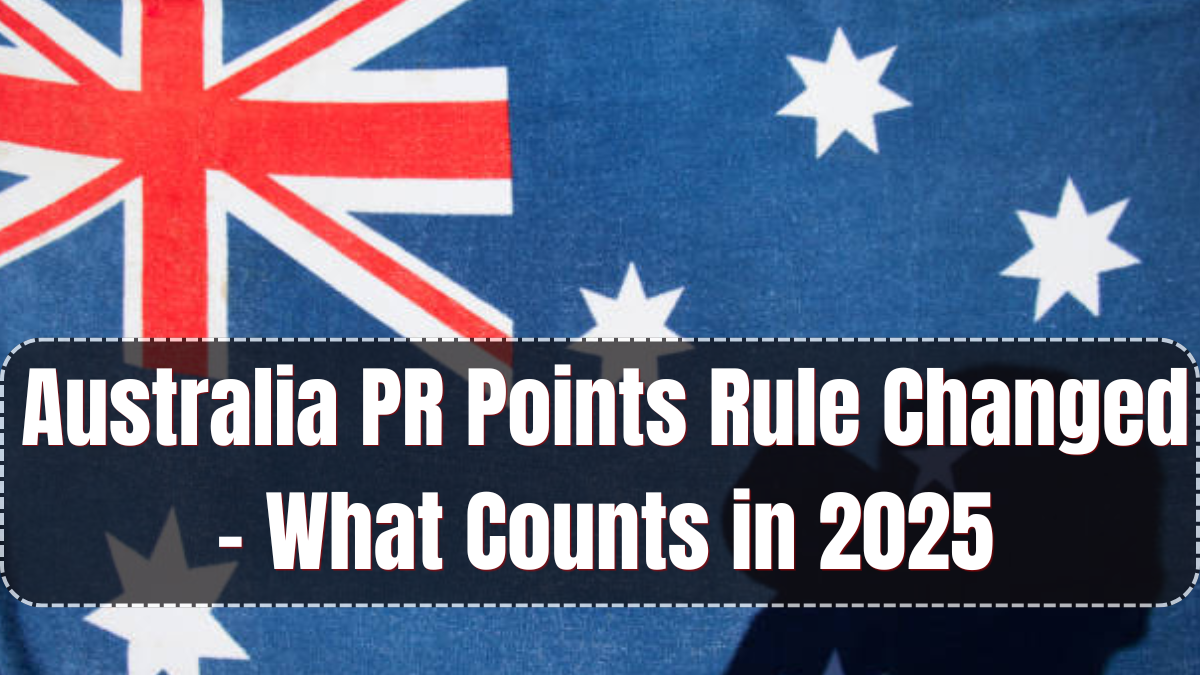The Australian government has revised its skilled migration eligibility criteria by introducing changes to the PR points system starting in July 2025. These changes directly impact aspiring migrants applying through the General Skilled Migration (GSM) stream, including the Subclass 189 (Skilled Independent), Subclass 190 (State Sponsored), and Subclass 491 (Regional Sponsored) visas.
The australia pr 2025 update reflects the government’s new focus on regional development, high-demand occupations, and youth-centric immigration. These adjustments are designed to attract younger, skilled professionals to settle in areas facing workforce shortages while also refining selection based on employability and contribution to the Australian economy.

What Is the PR Points System?
Australia uses a points-based immigration system to assess applicants for skilled visas. To be invited to apply for permanent residency, a candidate must score a minimum number of points based on factors like:
-
Age
-
Education qualifications
-
Work experience (Australia and overseas)
-
English language proficiency
-
Partner qualifications
-
Nomination by a state or employer
-
Study in regional Australia
Previously, a score of 65 points was considered the base threshold, but due to competition, successful applicants often required 90+ points for certain occupations.
Key Changes in PR Points 2025
The australia pr 2025 update brings several critical modifications to the points system. Here’s what’s new:
1. More Points for Regional Study and Living
Applicants who have lived and studied in designated regional areas for 2+ years will now receive 20 points (up from 15). This includes cities like Adelaide, Hobart, Darwin, and smaller towns in Victoria and Queensland.
2. Age Points Adjusted
-
Applicants aged 25–32 now receive 30 points (up from 25)
-
Age bracket 33–39 gets reduced to 20 points (was 25)
-
No change for applicants aged 18–24 (still 25 points)
This favors younger migrants and reduces the competitiveness of older professionals.
3. STEM Degree Priority
Applicants with a degree in Science, Technology, Engineering, or Mathematics (STEM) now get an additional 10 bonus points, regardless of whether they studied in Australia or overseas.
4. English Language Bonus Points Increased
-
Proficient English (IELTS 7 bands or equivalent): 10 points (unchanged)
-
Superior English (IELTS 8 bands or equivalent): 20 points (previously 10)
This change rewards applicants with high communication proficiency.
5. Changes to Partner Skill Points
-
Applicants with a skilled partner (under 45, with English and job code): 15 points
-
Applicants with a partner who has only English proficiency: 10 points
-
Single applicants will now receive 10 points instead of 5, to maintain fairness
6. New Occupation Weighting System Introduced
Each ANZSCO occupation code now comes with a “priority index,” allowing high-demand occupations to receive bonus points during invitations. For example, nurses, early childhood educators, aged care workers, and software engineers will have higher invitation likelihoods.
What Remains Unchanged
Some aspects of the points system remain the same:
-
State and regional sponsorship points (5–15 points depending on subclass)
-
Australian work experience (up to 20 points for 8+ years)
-
Overseas experience cap at 15 points
-
Study in Australia points (up to 10 for at least 2 years)
Applicants must still submit an Expression of Interest (EOI) via SkillSelect and await an invitation to apply.
Impact on Skilled Migrants
The new rules have made it easier for younger applicants with STEM backgrounds to reach high point scores quickly. However, it also means:
-
Applicants over 33 or from non-STEM fields may struggle to remain competitive
-
Regional living and study are now even more important
-
English test results play a much bigger role in determining point totals
-
Partner qualifications are more valuable, encouraging joint skilled applications
International students in Australia are being advised to choose regional universities and target courses in IT, engineering, health, and teaching to improve PR prospects under the australia pr 2025 criteria.
Example: Points Comparison Table
| Criteria | Old Points | New Points |
|---|---|---|
| Age (25–32) | 25 | 30 |
| Regional Study | 15 | 20 |
| Superior English (IELTS 8+) | 10 | 20 |
| STEM Degree | 0 | 10 |
| Skilled Partner | 10 | 15 |
A 27-year-old with a Master’s in Engineering, Superior English, regional study, and a skilled partner can now easily cross 100+ points, boosting their invitation chances significantly.
FAQs
What is the new minimum PR score required in 2025?
The minimum remains 65 points, but actual selection scores depend on your occupation. In-demand sectors are seeing invitations at 85–95 points.
How can I get the 20 points for English?
You must score at least 8 bands in each section of IELTS (or equivalent scores in PTE/TOEFL) to qualify for Superior English.
Is studying in regional Australia still beneficial?
Yes, even more so now. You get 20 points if you study and live in a regional area for 2 years or more, plus access to subclass 491 or 190 pathways.
What if I don’t have a partner?
Being single now gives you 10 points under the 2025 update, compared to 5 earlier. So, you’re not at a disadvantage.
Will these changes affect current applications?
These changes apply to EOIs submitted on or after July 1, 2025. Applications lodged before this date will be assessed under old rules unless withdrawn and resubmitted.
Click here to know more.
